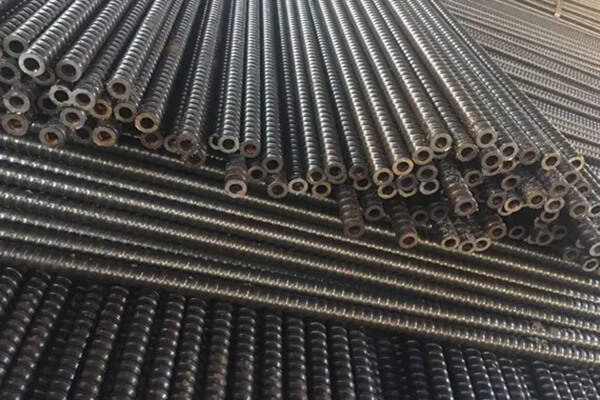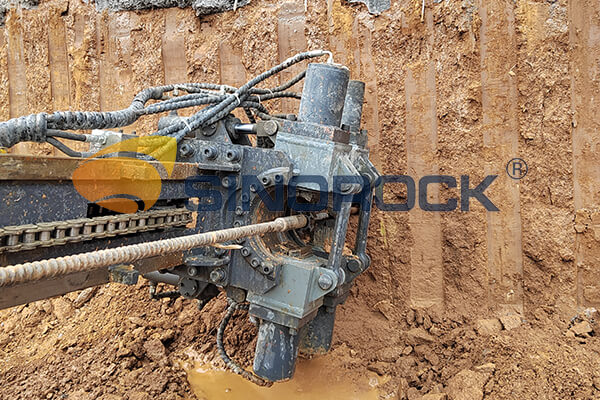What Is the Difference Between Rock Bolt and Rock Anchor?
Time:2023-11-08From:sinorock View:
Introduction
In the world of civil engineering and construction, the terms "rock bolt" and "rock anchor" are frequently used. Both are critical elements in ensuring the stability and safety of various structures, but what exactly are they, and how do they differ? This article aims to provide a comprehensive understanding of the differences between rock bolts and rock anchors in the context of the construction industry.
What are Rock Bolts and Rock Anchors?
Understanding Rock Bolts
Rock bolts also known as tensioned anchors, are specialized fasteners that play a vital role in reinforcing and stabilizing rock formations during construction projects. These long anchor rods are typically installed on rock surfaces to enhance the rock's load-bearing capacity and prevent instability.

Key Characteristics of Rock Bolts
1. Stabilizing Unstable Rock: Rock bolts are primarily used to stabilize and reinforce loose or unstable rock formations. They provide structural support to prevent rockfalls or cave-ins, making them essential in mining and tunneling projects.
2. Tensioned to Active Load: Rock bolts are tensioned once they are anchored to the surrounding rock. This tension creates a compressive force within the rock, increasing its shear strength and overall stability. Rock bolts are viewed as a sort of dynamic support because of the post-tensioning they give and are utilized to add compressive pressure to joints inside a stone mass. This power creates grinding along the break planes and assists with decreasing block development.
Exploring Rock Anchors
Rock anchors, like rock bolts, are instrumental in providing stability to rock formations. However, they serve a slightly different purpose and are designed to meet specific engineering needs. The most recognized sort of internal reinforcement is anchors, which are threaded steel bars or cables. The bars and cable lengths are highly variable and are compatible with a variety of rock types, structural characteristics, and strengths.

Key Characteristics of Rock Anchors
1. Tensile Load Transfer: Rock anchors are designed to transfer tensile loads from structures or foundations to the ground. They are used to support and secure various structures, such as bridges, dams, and retaining walls.
2. Passive Anchoring: Unlike rock bolts, which actively tension the surrounding rock, rock anchors are passive in nature. They do not create compressive forces within the rock but provide essential anchorage for the structure they support.
Differentiating Factors
Now that we've explored the fundamental characteristics of rock bolts and rock anchors, let's delve into the factors that set them apart:
Purpose
Rock bolts are primarily used to stabilize loose or unstable rock formations, making them common in mining and tunneling projects and some civil construction foundations. In contrast, rock anchors are used to transfer tensile loads from structures to the ground, offering support for structures like bridges and retaining walls. Rock anchors can be combined with other reinforcement methods if they cannot mitigate the risks alone.
Active vs. Passive Anchoring
Rock bolts actively tension the surrounding rock, increasing shear strength and stability. On the other hand, rock anchors are passive and do not create compressive forces within the rock. Their main role is to provide anchorage for structures.
Installation method
Rock bolts need much more time to install than dowels because they have a more complex construction process which includes the following several steps:
1. Drill a Hole: Start by drilling a hole into the rock face at the desired location.
2. Insert the Rock Bolt: Place the rock bolt into the hole.
3. Tension the Bolt: Actively tension the rock bolt to create compressive forces within the rock, increasing its shear strength.
4. Grouting the free length: Inject grout into the free length and provide additional support.
Rock anchor is a little easier to install, basically requiring only two steps:
1. Drill a Hole: Similar to rock bolts, begin by drilling a hole into the desired location.
2. Install the Rock Anchor: Place the rock anchor in the hole to provide passive anchorage for the structure it supports.
Generally, the length of the rock anchors that are used to stabilize the slopes is 6m or 20 feet, and the maximum length will be 12m or 40 feet. And, the diameter of the rock anchors is 20 – 50 mm or 5/8 – 2 inches. The material of the rock anchors includes high-strength steel, stainless steel, and others.
Which One to Choose: Rock Bolts or Rock Anchors?
The choice between rock bolts and rock anchors depends on the specific needs of your project. Consider the following factors:
- Stability Requirements: If your project involves stabilizing loose or unstable rock formations, rock bolts are the more suitable choice due to their active tensioning capabilities.
- Structural Support: If the primary goal is to transfer tensile loads from a structure to the ground, then rock anchors are the preferred option.
The most significant difference between rock bolts and rock anchors lies in their mode of operation. Rock bolts actively tension the surrounding rock, creating compressive forces, while rock anchors are passive and serve as anchorage without actively tensioning the rock.
Understanding these distinctions is crucial for engineers and construction professionals. The choice between rock bolts and rock anchors can significantly impact the safety and stability of a project. Whether you're working on a mining operation, tunneling project, or a critical bridge construction, selecting the right component is essential for success.

Conclusion
In the world of construction and civil engineering, rock bolts and rock anchors are indispensable tools for ensuring the safety and stability of structures. While they share some similarities, such as their anchoring function, they serve distinct purposes and have different methods of achieving their goals. Understanding the differences between these two components is essential for engineers and construction professionals to make informed decisions in their projects.
As the industry continues to evolve, we need to stay updated with the latest materials, techniques, and safety measures related to rock bolts and rock anchors. Sinorock, with a team experienced in geotechnical engineering services, offers reliable and efficient solutions, including self-drilling anchor bolts, expansion shell anchor bolts, and friction bolts. Sinorock's focus on safety and efficiency makes them a preferred choice for geological anchoring needs. If you have questions about geotechnical engineering, feel free to contact us at sinorock@sinorockco.com for expert guidance and top-quality solutions.
latest news
-

- What Are the Applications of SDA Bolts in Hydropower Stations?
- Time:2025-08-21From:This Site
- Learn how self-drilling anchor bolts enhance slope stability, tunnel support, and dam reinforcement in complex geological conditions at hydropower stations. Optimize hydropower projects with efficient, cost-effective, and eco-friendly solutions.
- View details
-

- Slope Stabilization with SDA Bolts: Benefits & Applications
- Time:2025-08-19From:This Site
- Discover how self-drilling anchor bolts (SDA bolts) provide superior slope stabilization for highways, railways, and tunnels. Learn their key benefits, installation process, and real-world applications in loose or collapsible soils.
- View details
-

- How Self-Drilling Rock Bolts Enhance Tunnel Support in Fractured Rock?
- Time:2025-08-15From:This Site
- Discover how self-drilling rock bolts enhance tunnel support in fractured rock. Learn their benefits, installation steps, and real-world applications for safe, efficient tunneling.
- View details
-

- Sinorock 2025 Quality Month | Strengthening Quality Foundations, Empowering Product Excellence
- Time:2025-08-13From:This Site
- Sinorock’s 2025 Quality Month, themed “Strengthening Quality Foundations, Empowering Product Excellence,” successfully concluded, reinforcing our commitment to superior product quality.
- View details
-

- Sinorock Safety Month 2025 | Everyone Speaks Safety, Everyone Can Respond
- Time:2025-07-03From:This Site
- Sinorock Safety Month 2025, centered on the theme "Everyone Speaks Safety, Everyone Can Respond - Spot Workplace Hazards," has wrapped up successfully!
- View details
-

- Quality Control: the Vital Factor of A SDA Bolt Factory
- Time:2025-01-09From:This Site
- Sinorock’s comprehensive quality control system, from supplier management to outgoing inspections, ensuring the highest standards for self-drilling anchor bolts in construction.
- View details
-

- Sinorock Invites You to Explore Proven Self-Drilling Anchor Bolt Solutions at bauma 2025
- Time:2025-03-07From:This Site
- From April 7–13, 2025, explore Sinorock’s Self-drilling anchor bolt solution at Booth C2.513/4 in Hall C2 of the Messe München Exhibition Center (Munich, Germany).
- View details
-
.jpg)
- SINOROCK to Attend EXPOMINA PERÚ 2024 in Lima, Peru
- Time:2024-08-10From:This Site
- Sinorock to Attend EXPOMINA PERÚ 2024 in Lima, Peru
- View details
-
.jpg)
- SINOROCK to Participate in MINING AND METALS CENTRAL ASIA 2024
- Time:2024-08-08From:This Site
- SINOROCK to Participate in MINING AND METALS CENTRAL ASIA 2024
- View details
 Download
Download 


